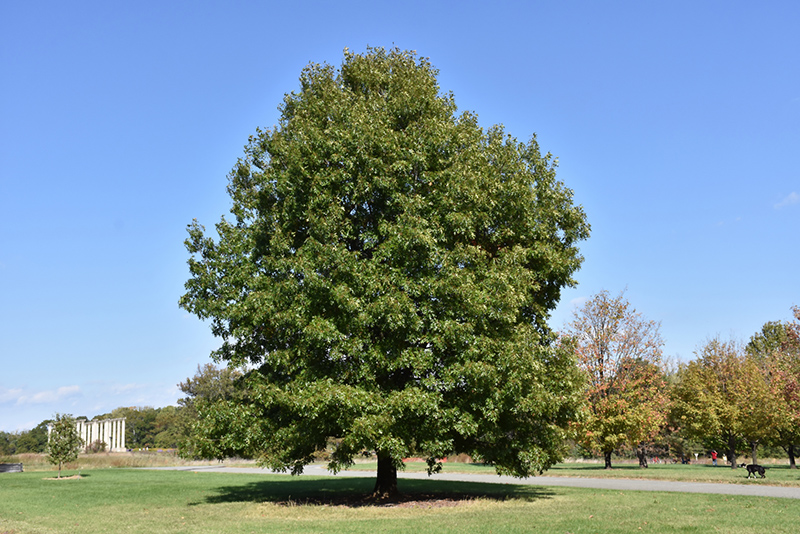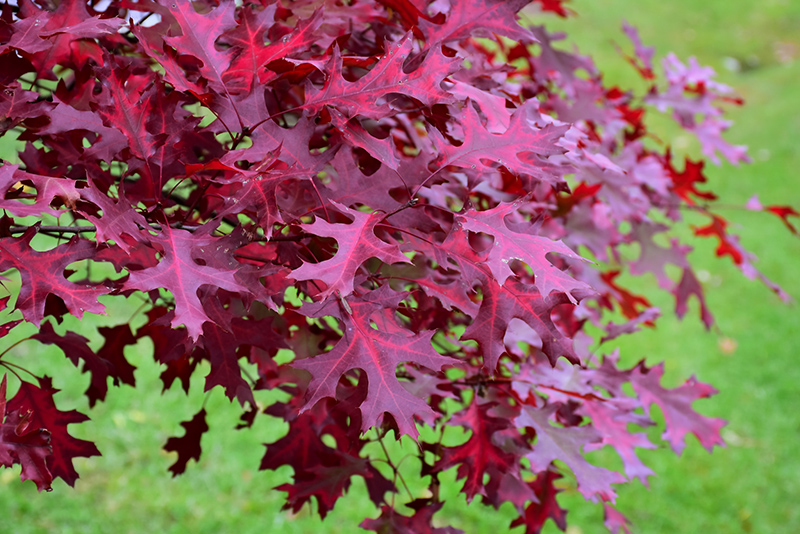Plant Finder
Height: 70 feet
Spread: 50 feet
Sunlight:
![]()
Hardiness Zone: 3
Description:
An impressive shade tree with a loosely pyramidal habit of growth and interesting leaves; fast growing for an oak, great as a fall accent in the home landscape; requires loose, acidic soils, develops iron chlorosis in alkaline soils
Ornamental Features
Scarlet Oak has dark green deciduous foliage on a tree with a pyramidal habit of growth. The spiny lobed leaves turn an outstanding scarlet in the fall. However, the fruit can be messy in the landscape and may require occasional clean-up. The furrowed gray bark and silver branches add an interesting dimension to the landscape.
Landscape Attributes
Scarlet Oak is a deciduous tree with a distinctive and refined pyramidal form. Its average texture blends into the landscape, but can be balanced by one or two finer or coarser trees or shrubs for an effective composition.
This tree will require occasional maintenance and upkeep, and is best pruned in late winter once the threat of extreme cold has passed. It is a good choice for attracting squirrels to your yard. Gardeners should be aware of the following characteristic(s) that may warrant special consideration;
- Messy
Scarlet Oak is recommended for the following landscape applications;
- Shade
Planting & Growing
Scarlet Oak will grow to be about 70 feet tall at maturity, with a spread of 50 feet. It has a high canopy with a typical clearance of 6 feet from the ground, and should not be planted underneath power lines. As it matures, the lower branches of this tree can be strategically removed to create a high enough canopy to support unobstructed human traffic underneath. It grows at a fast rate, and under ideal conditions can be expected to live to a ripe old age of 300 years or more; think of this as a heritage tree for future generations!
This tree should only be grown in full sunlight. It is very adaptable to both dry and moist locations, and should do just fine under average home landscape conditions. It is not particular as to soil type, but has a definite preference for acidic soils, and is subject to chlorosis (yellowing) of the foliage in alkaline soils. It is somewhat tolerant of urban pollution. This species is native to parts of North America.
Disclaimer - Rutgers Landscape & Nursery Plant Finder is an online resource representing many of the varieties that we carry over the course of the season, and is intended for informational purposes only. Inventory varies seasonally, so we cannot guarantee that every plant will be in stock at all times - please contact Rutgers directly for current availability.


